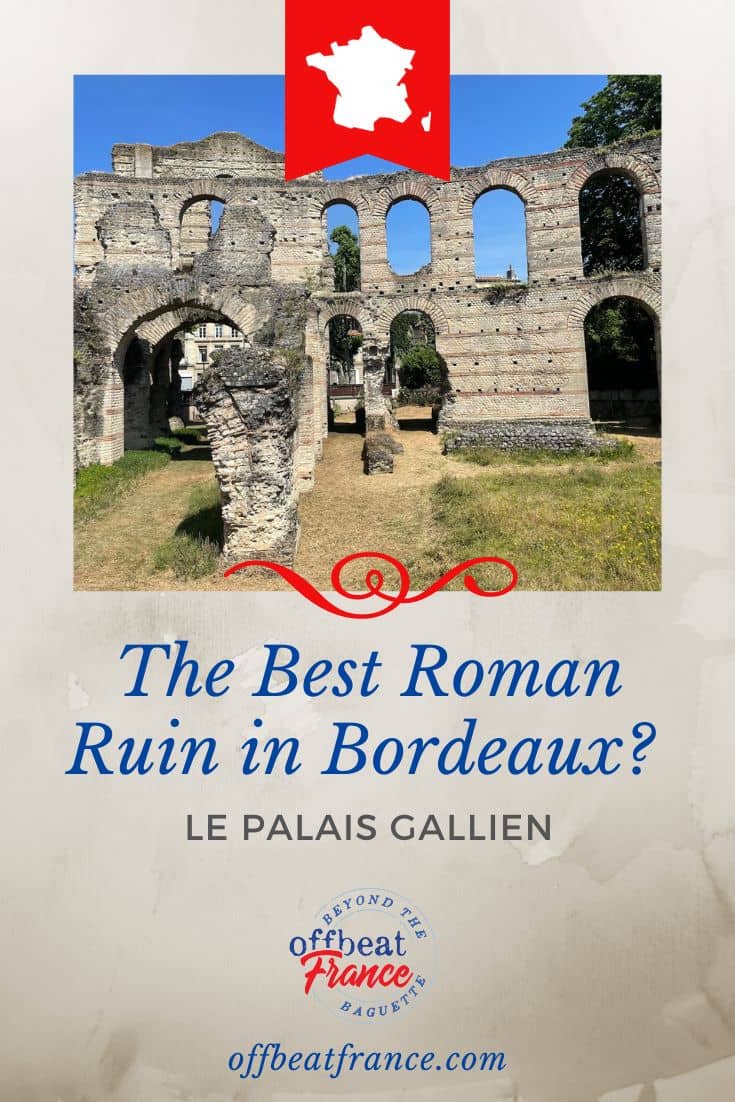Unsure about your French table manners? Click Here to download > > How to avoid these 10 food etiquette mistakes !
- Home ›
- Culture & Civilization ›
- Roman France ›
- Bordeaux Roman Ruins
Bordeaux Roman Ruins: A Glimpse of the City's Rich Historical Past
Published 5 June 2023 by Leyla Alyanak — Parisian by birth, Lyonnaise by adoption, historian by passion
I've enjoyed so many things in Bordeaux – it's a stunning city with great food and wonderful architecture. But I only discovered Bordeaux Roman ruins on my last trip!
Most people visit Bordeaux for the wine (although there's plenty to do in Bordeaux for non-drinkers!)
Visitors also come for the architecture, the gastronomy, and numerous national Bordeaux monuments (it's outranked only by Paris). And then, there's splashing around the world’s largest reflecting pool.
But if you love Antiquity, you'll have to work just a little bit harder to find it.
NOTE: Pages on this site may contain affiliate links, which support this site. See full Privacy Policy here.
Bordeaux, once known as Burdigala, was invaded by Rome around 56 BCE and became an important trading outpost for the Empire. Yet, little evidence of Ancient Rome has survived − unless you count the introduction of wine during the first century, of course.
A bit of Roman history
On a recent visit, I made it my mission to find the remaining Bordeaux Roman ruins, and I didn’t do too badly: an amphitheater, several mass graves, a crypt, and a museum. Not bad at all.
Once it came under Roman rule, Burdigala would become one of the richest cities of Gaul, and a quick visit to the local museum will provide plenty of examples of this wealth, much of it built on the tin and lead trade.
Its heyday would run through most of the third century, with plenty of monumental building and expansion, all of which would come to a halt with Barbarian invasions by the Franks around 276.
The attacks prompted the building of ramparts and gates to protect the city, but that wouldn't help much: it would be set on fire and pillaged.
The city would be rebuilt, becoming a key pilgrimage stop along the Way of St James, the Camino de Santiago.
Ultimately, however, Bordeaux would slowly drift into obscurity for a few centuries, prospering under the rule of King Henry II of England and his wife, Eleanor of Aquitaine. The wine trade would grow, with plenty of wine flowing from the entire region towards England.
However interesting this period of Bordeaux culture, though, it is not our immediate concern as we search for traces of Rome.
Palais Gallien, Bordeaux
It’s not hard to see from what is left of the Palais Gallien that it was once an imposing structure, an amphitheater in the style of Arles or Nimes that would have held up to 22,000 spectators.
It also happens to be the major Roman ruin left in Bordeaux.
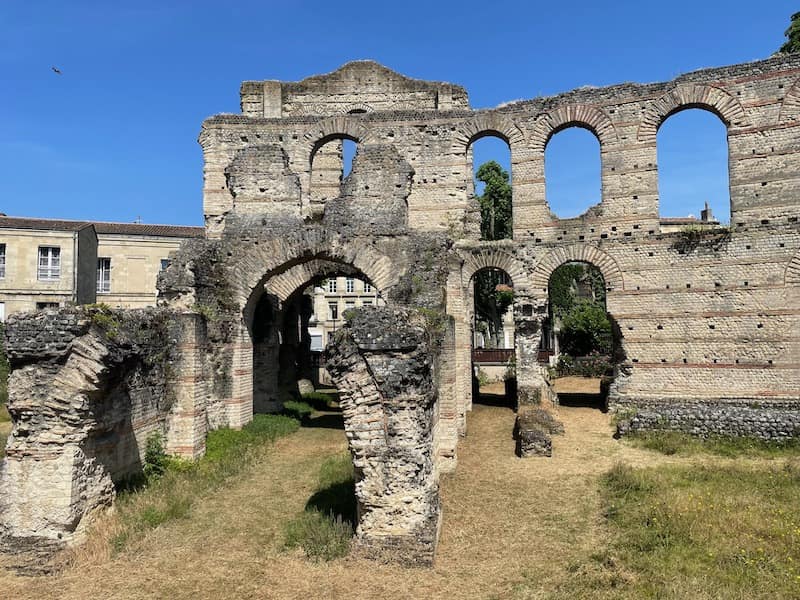
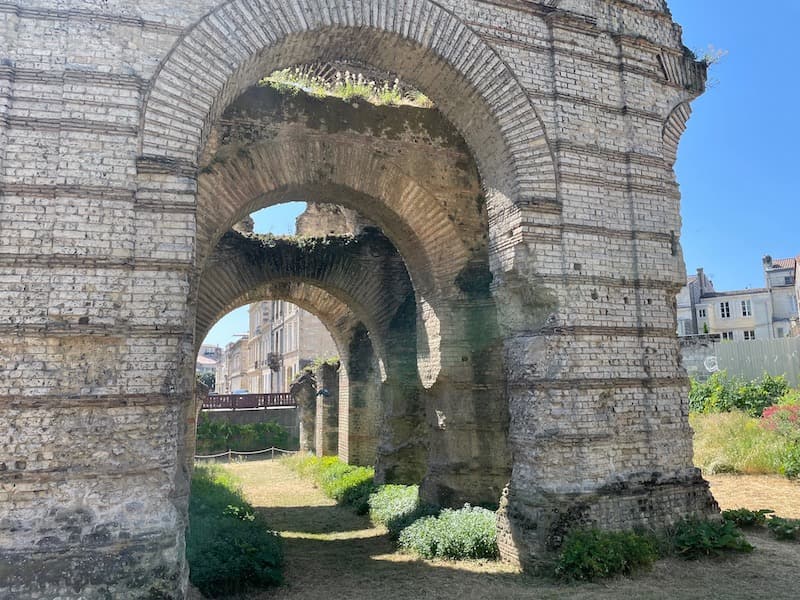 The Palais Gallien, Bordeaux: what's left of the Roman amphitheatre
The Palais Gallien, Bordeaux: what's left of the Roman amphitheatreThe site is small but interesting for lovers of Roman ruins. Two metal balustrades prevent access to the site itself, and that’s a good thing for preservation. But you can get an excellent view from both sides - just walk around the block to access the side opposite from the one you’re on.
The destruction of the Palais Gallien follows an all-too-familiar pattern for Roman monuments in France.
The Palais Gallien probably perished during the Frankish raids on Gaul towards the end of the third century. There are some accounts of a fire which would have lasted two days, burning through the wooden bleachers, but there is little tangible evidence of that.
What we do know is that the structure eventually housed thieves and other like-minded groups, becoming a bit insalubrious and best avoided by the city's proper burghers.
Then came the French Revolution which, however well intentioned, managed to raze more than it built. The Palais Gallien became a public stone and sand quarry, and people carted off materials to feed the building frenzy started by the city’s increasing urbanization.
The local prefect finally decreed an end to the destruction in 1800 and when the first ever French list of national monuments was created in 1840, the Palais Gallien was on it.
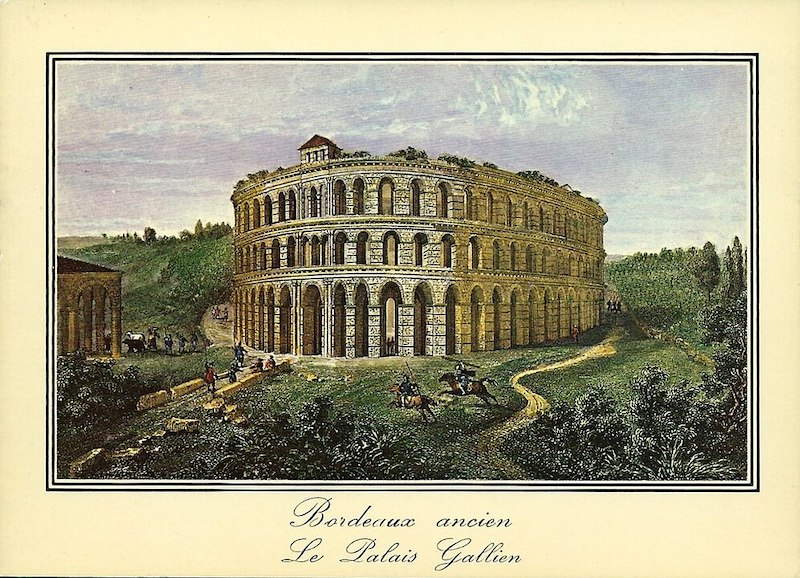 This 1920 illustration shows what the Palais Gallien might once have looked like
This 1920 illustration shows what the Palais Gallien might once have looked like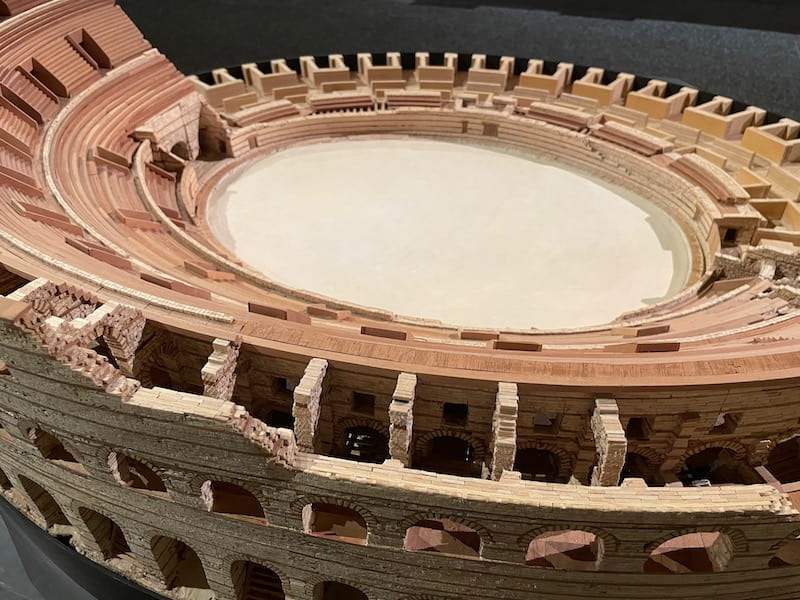 A model of the Palais Gallien sits in the Musée d'Aquitaine
A model of the Palais Gallien sits in the Musée d'AquitaineThe ruins are quite easy to find: just take rue du Palais Gallien off the northwestern corner of Place Gambetta and keep walking for ten minutes or so until you reach the rue du Colisée, and turn left. You can't miss it.
Saint-Seurin Necropolis
Not far away, also within walking distance, is Saint-Seurin Basilica. It is built on the remains of a Gallo-Roman necropolis (and a slightly later Middle Aged one), making it one of the oldest Roman vestiges in the city and one protected by UNESCO’s World Heritage List as part of the Routes of Santiago de Compostela in France.
Saint-Seurin, by the way, was the fourth Bishop of Bordeaux and his sarcophagus is here, under the church.
Many of the caskets are made of stone, though other materials were used too, including marble and wood. While more than a dozen tombs can be seen under the church, a few of the more spectacularly carved ones have been moved to the Musée d’Aquitaine (see below).
Several saints are believed to have been buried here, including Veronica, Seurin of course, and Benedicta.
Just walk into Saint-Seurin Basilica, head to the right-hand side, and you should see some steps going down. Just follow them to the crypt.
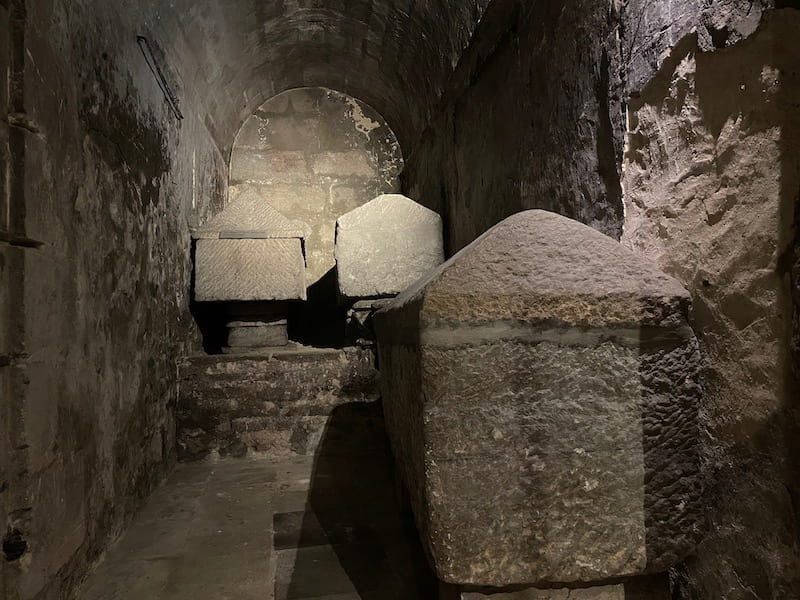
Saint-Seurin Archeological Site
Not to be confused with the crypt, the archeological site is right next door, with steps leading down just outside the main entrance (you’ll have to pass through a small metal gate and pay a nominal fee when you reach the bottom).
The listed opening hours aren’t to be completely trusted, however, as I showed up when it was scheduled to be open and it was not. It might be wise to check with the Bordeaux Tourist Office for accurate hours and for a guide, just to be sure, because everything I’ve read confirms that if you’re a fan of Ancient Rome, you shouldn’t miss this site.
Not only is it one of Bordeaux's oldest, but it contains tombs from both the Roman and medieval eras.
Roman tombs under Bordeaux streets
The newest addition to the Roman ruins of Bordeaux is an exceptional necropolis unearthed just a few years ago during roadworks to expand the public transportation system.
Some 300 skeletons were discovered, making this site an important one – there are fewer than a handful of sites of similar importance across France.
No one is sure how these people died, but they may have been victims of the 6th-century bubonic plague pandemic that hit during Justinian’s rule. (Justinian was a famous military emperor who ruled during the late Roman Empire.)
During the week, teams are hard at work unearthing what might still be buried here, dashing under the canopy when the sun beats too strongly.
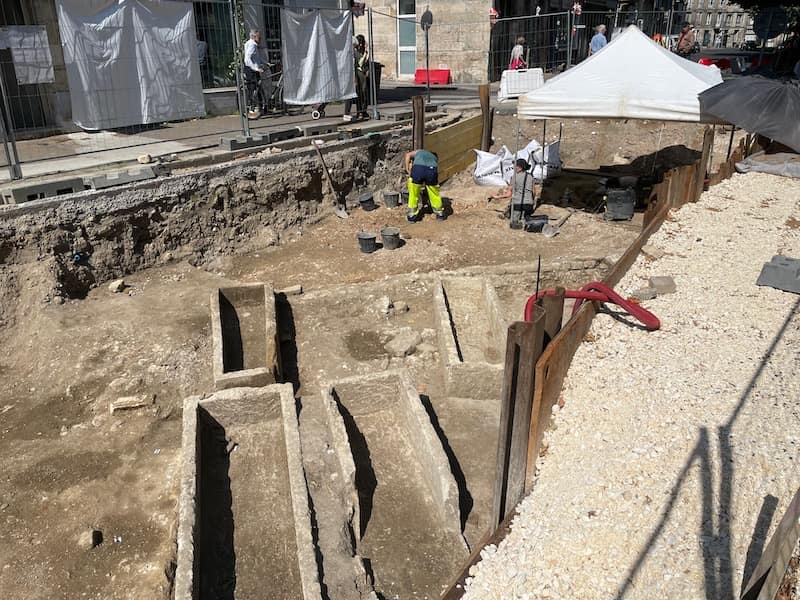
The tombs are an extension of the Saint-Seurin necropolis just a few steps away.
The Roman Castrum
The walled city, in Roman times, was known as the Castrum, a term also used to denote a military camp.
With its 10m-high walls (5m thick) and 46 towers, the enclosure would have been imposing.
Sadly, the spread of the city chipped away at the walls, and little, if anything, is left. A few remnants are hidden from view in the cellars of the Rue des Remparts, and one wall fragment is apparently located in a courtyard in the Passage de la Tour de Gassies, surrounded by buildings and protected by an iron gate. The best you’ll achieve is probably a photograph of the street sign...
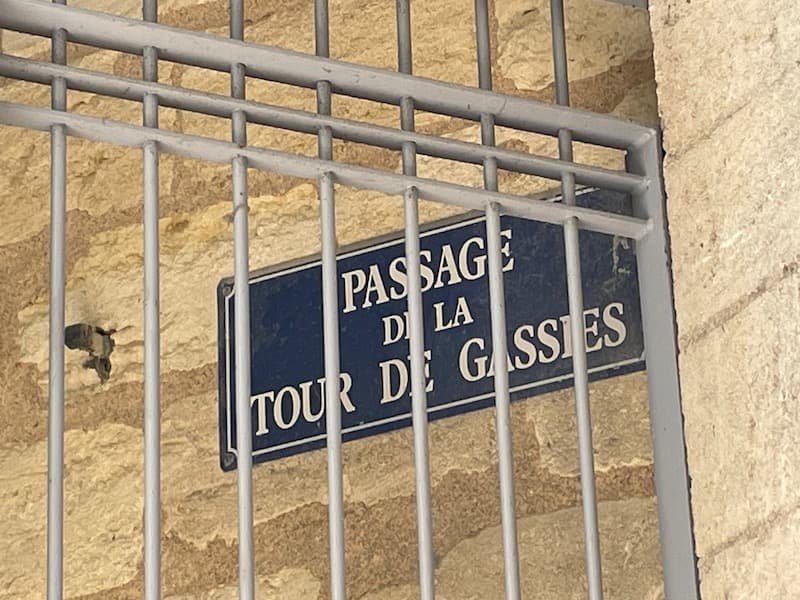
Even if I had seen the tiny bit of wall, let’s be honest, it would have been less than spectacular: a small mound of brick, stones, and grass.
The ramparts may have disappeared, but as late as 1865, you could still see some along Saint-Andre Cathedral. They suffered the fate of history, destroyed to make way for something newer.
Antiquity at the Musee d’Aquitaine
Many of the smaller pieces found in excavations throughout Bordeaux end up at the Musée d’Aquitaine, dedicated to the region’s history.
In addition to the usual coins, amphorae and artefacts, you’ll find a few significant Roman pieces, including several sarcophagi uncovered in Saint-Seurin, and a near-perfect floor mosaic uncovered in one of Burdigala’s wealthier homes.
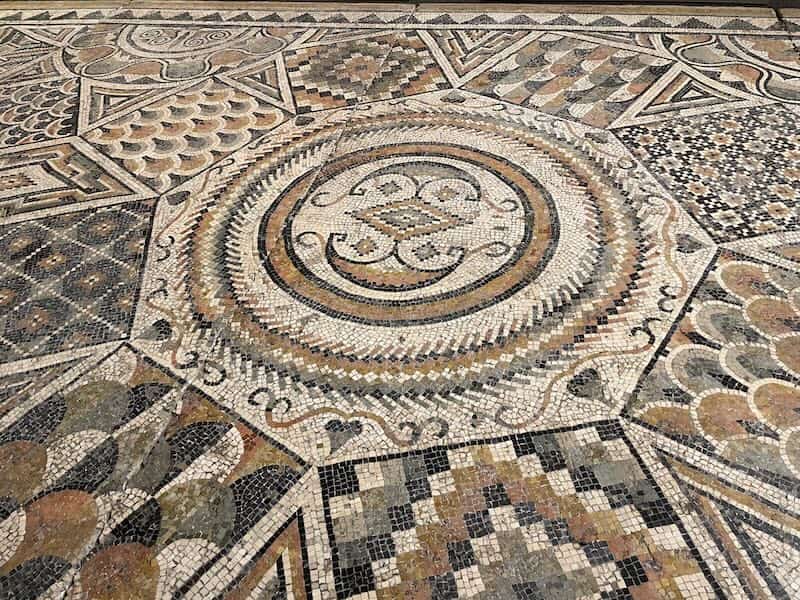
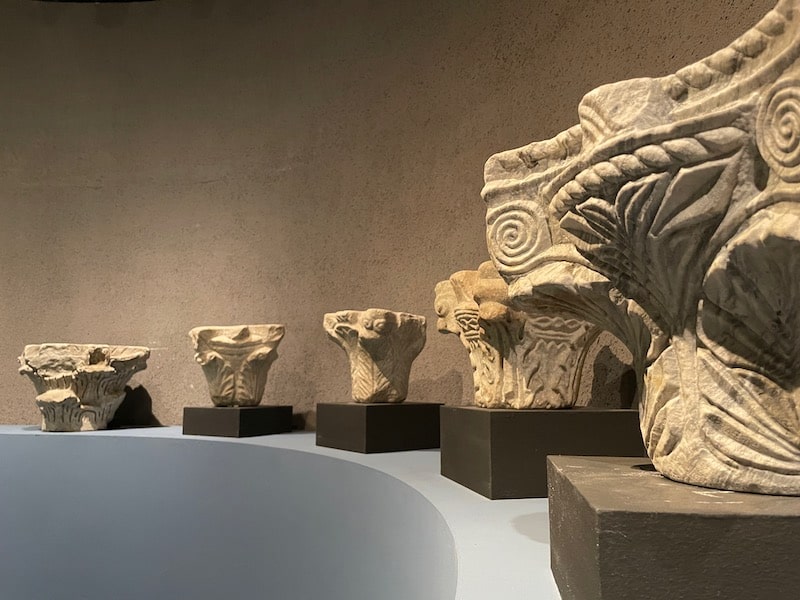
Of course no Roman exhibition would be complete without classical gods, and here you’ll find an impressive Hercules, whose strength and power made him a hero, and Jupiter, who governed all aspects of Roman life.
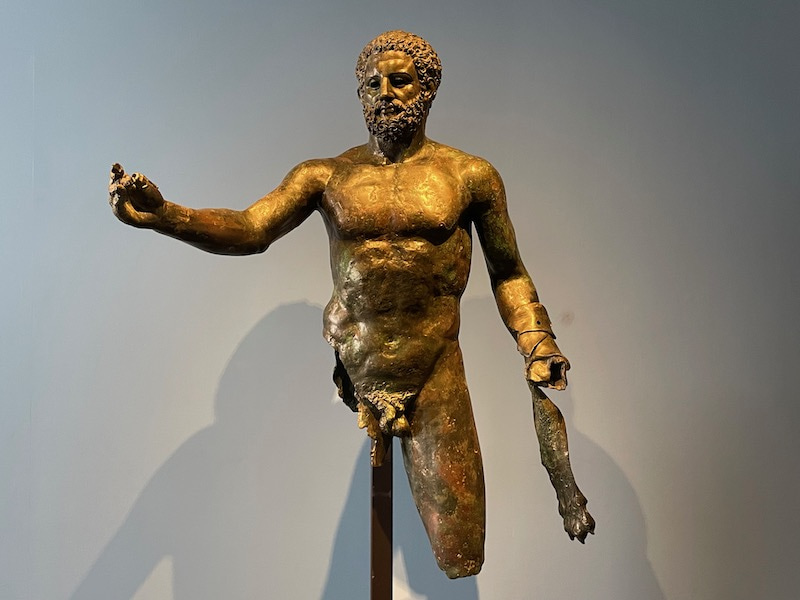 What is left of a bronze statue of Hercules in the Musée d'Aquitaine
What is left of a bronze statue of Hercules in the Musée d'AquitaineA final Roman ruin in Bordeaux
This one goes at the end because nothing is left of it: the Piliers de Tutelle, which we all wish might have been preserved.
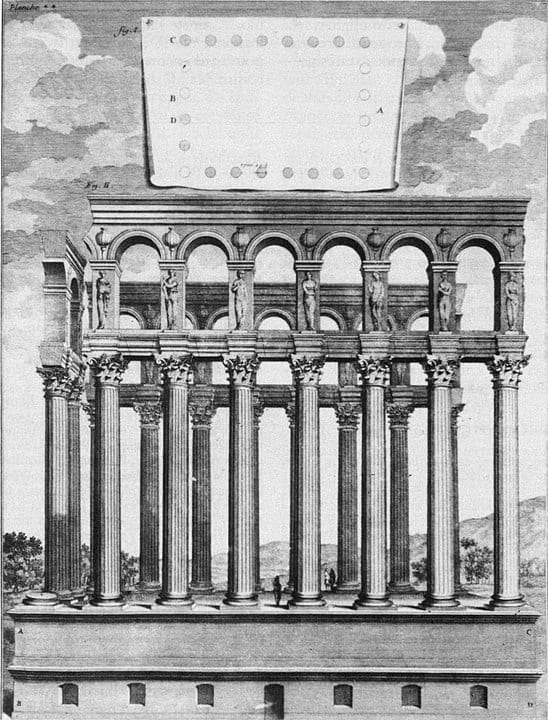
This row of pillars was built during the 3rd century, possibly where the southwestern corner of the Grand Theatre now stands: 24 columns with ornate arcades, which were razed during the 17th century.
While there are no visible remnants of the pillars, historians now believe that some ruins discovered within the city’s ramparts during the 19th century might belong to these pillars.
Burdigala: Gallo-Roman city of commerce
When Burdigala became Roman in 56 BCE, it became a commercial showcase for a major empire. Ships from many lands jostled for space in its harbor, and trade was hectic – pewter and tools and wheat. Soon, vineyards would flourish.
Built like a rectangle with straight, well aligned streets, the city could be accessed through one of four gates.
As commerce grew, Bordeaux began to expand. Soon, it would be home to 20,000 people, many of whom lived in some of the most luxurious houses in all of Gaul.
There may not be much of Antiquity left in the city, but what there is harks back to a rich and varied history that is still, today, being unearthed.
Essential France travel resources
BOOK YOUR ACCOMMODATIONS
I use booking.com: for their huge inventory and for their easy cancellation policies
FLIGHT DELAYED OR CANCELED?
AirHelp can get you compensation (it works, I've used it)
DO YOU NEED A SIM CARD FOR FRANCE?
Here's the one I use when I travel abroad
PROTECT YOUR BELONGINGS
Keep pickpockets away with an anti-theft purse or an infinity scarf - and your identity with a VPN (I'm using Nord VPN)
TRAVEL INSURANCE
I recommend Visitors' Coverage or SafetyWing. for health away from home
GETTING FROM A TO B
I use Discovercars to rent cars and either Omio or RailEurope for train tickets
TO READ ABOUT FRANCE
Here's my long list of books about France
AND DON'T FORGET YOUR GUIDEBOOKS!
➽ Lonely Planet's Best Road Trips France
➽ DK Witness Road Trips France
➽ Any of the Green Guides series
➽ And, while you're at it, why not a map of France?
Did you enjoy this article? I'd love if you shared it!
